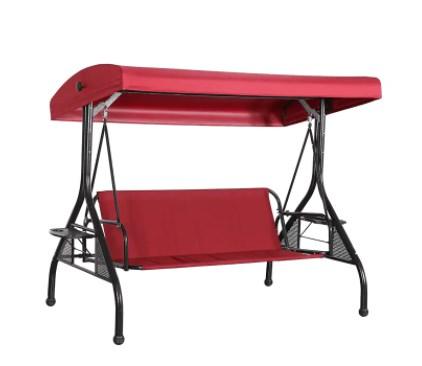Crafting an outdoor swing glider chair involves a meticulous process that combines precision engineering with aesthetic design to create a piece that seamlessly blends comfort, durability, and functionality. From selecting the right materials to fine-tuning the assembly process, each step is crucial in ensuring the quality and performance of the final product.
The journey of crafting an outdoor swing glider chair typically begins with the selection of high-quality materials. These chairs are often crafted from robust materials such as weather-resistant wood, durable metal alloys like aluminum or steel, and synthetic materials such as polyethylene wicker or resin. The choice of materials depends on factors like durability, weather resistance, and aesthetic appeal.
Once the materials are selected, the manufacturing process begins with cutting and shaping the various components of the chair. Precision-cutting machinery is used to ensure that each piece is cut to the exact dimensions specified in the design. For wooden chairs, this may involve cutting, planing, and sanding the wood to achieve smooth edges and surfaces.
Next comes the assembly process, where skilled craftsmen meticulously put together the various components of the chair. This often involves techniques such as welding, screwing, or gluing, depending on the materials used and the design of the chair. Attention to detail is paramount during this stage to ensure that the chair is structurally sound and free from defects.
One of the key features of an outdoor swing glider chair is its suspension system, which allows it to glide smoothly back and forth. This typically involves attaching the seat to a sturdy frame using heavy-duty hinges or chains that are designed to withstand the weight of the occupant while providing a smooth gliding motion. The suspension system must be carefully calibrated to ensure optimal performance and safety.
In addition to the suspension system, outdoor swing glider chairs may also feature other ergonomic design elements such as contoured seats, armrests, and backrests that are designed to provide maximum comfort and support. These features are carefully integrated into the design to ensure that the chair is ergonomically sound and conducive to relaxation.
Once the chair is assembled, it undergoes rigorous quality control checks to ensure that it meets the highest standards of quality and craftsmanship. This may involve testing the structural integrity of the chair, checking for any defects or imperfections in the materials or construction, and verifying that all moving parts function smoothly.
Finally, the finished chairs are carefully packaged and prepared for shipping to retailers or customers. Special care is taken to protect the chairs from damage during transit, with each chair being securely wrapped and padded to prevent scratches, dents, or other forms of damage.
In conclusion, crafting an outdoor swing glider chair is a complex and intricate process that requires careful attention to detail, skilled craftsmanship, and a dedication to quality. From selecting the finest materials to fine-tuning the assembly process, every step is essential in creating a chair that is not only beautiful and comfortable but also built to last. So the next time you relax in an outdoor swing glider chair, take a moment to appreciate the craftsmanship and care that went into creating it.
